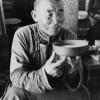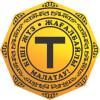https://muse.jhu.edu/pub/1/article/899674
Becoming Inner Kirghiz: Qing Policy Toward the Five Tribes in Xinjiang, 1750s–1790s*
Jaymin Kim
Late Imperial China
Johns Hopkins University Press
Volume 44, Number 1, June 2023
pp. 79-119
Article
View Citation
Additional Information
Abstract
Abstract:
The scholarship on Qing Xinjiang has not paid much attention to the Qing relationship with the Kirghiz. On one hand, the Kirghiz, decentralized and fragmented, escape the attention of scholars interested in Qing relations with Central Asian “polities.” On the other hand, historians of Altishahr consider the Kirghiz as nomadic outsiders, only mentioning them in passing when their paths cross those of the Altishahri. A careful examination of Manchu-language palace memorials from the Qingdai Xinjiang Manwen dang’an huibian, however, shows that there was a subgroup of Kirghiz who the Qianlong emperor (r. 1735<en>99) and his officials firmly incorporated into Altishahr and maintained as an integral part of Altishahr society. In turn, these Kirghiz, whom I call “inner Kirghiz,” went on to serve the Qing empire as active agents of early Qing state building efforts in Xinjiang. Using inner Kirghiz life stories, I will ultimately argue that boundaries separating “Qing” and “foreign” remained elastic throughout the second half of the eighteenth century. These boundaries were neither clear-cut nor permanent, constantly fluctuating according to the decisions made by the Qianlong emperor and his officials as well as the inner Kirghiz themselves.
Исследования, посвященные цинскому Синьцзяну, не уделяли большого внимания отношениям Цин с киргизами. С одной стороны, киргизы, децентрализованные и раздробленные, ускользают от внимания ученых, интересующихся отношениями Цин с центральноазиатскими "политиями". С другой стороны, историки Алтышара рассматривают киргизов как кочевых чужаков, упоминая их лишь вскользь, когда их пути пересекаются с путями Алтышара. Однако тщательное изучение дворцовых мемориалов на маньчжурском языке из Циндай Синьцзян Маньвэнь даньань хуйбянь показывает, что существовала подгруппа киргизов, которую император Цяньлун (р. 1735<en>99) и его чиновники прочно включили в Алтишахр и поддерживали как неотъемлемую часть алтишахрского общества. В свою очередь, эти киргизы, которых я называю "внутренними киргизами", продолжили служить империи Цин в качестве активных агентов ранних усилий Цин по строительству государства в Синьцзяне. Используя истории жизни внутренних киргизов, я, в конечном итоге, утверждаю, что границы, разделяющие "цинских" и "иностранных", оставались эластичными на протяжении всей второй половины восемнадцатого века. Эти границы не были ни четкими, ни постоянными, они постоянно колебались в зависимости от решений, принимаемых императором Цяньлуном и его чиновниками, а также самими внутренними киргизами.



